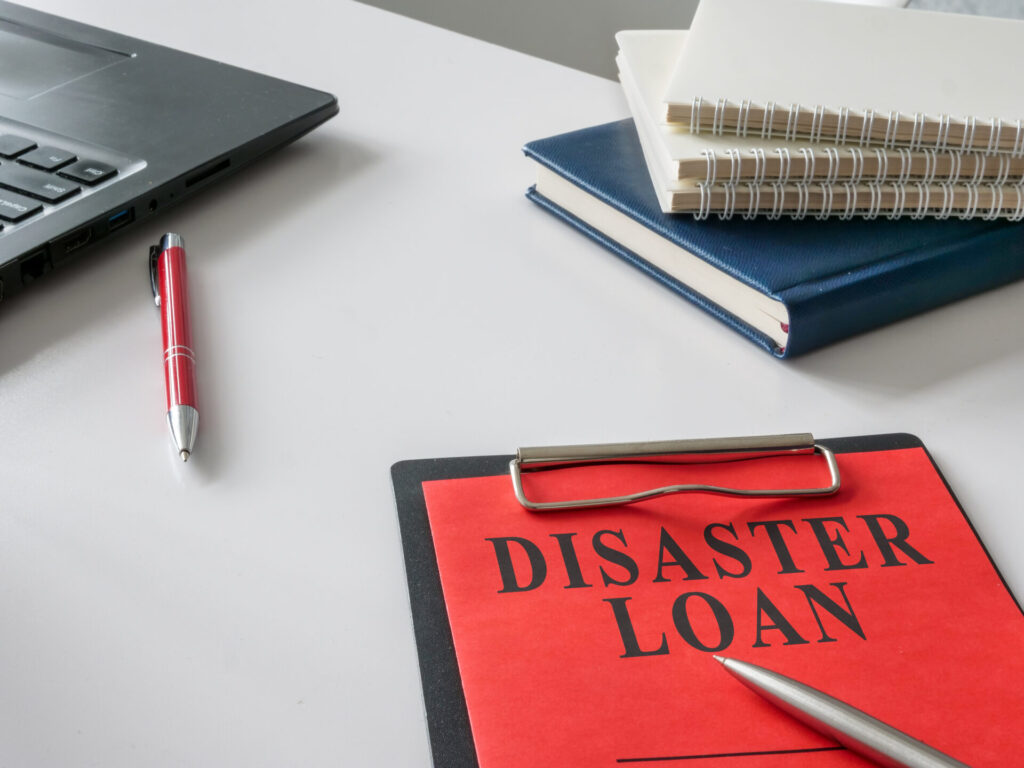 CFGMS Admin
April 7, 2023
Categories:
Business Tips, Small Business Funding, Working Capital Financing
CFGMS Admin
April 7, 2023
Categories:
Business Tips, Small Business Funding, Working Capital Financing
About the SBA’s EIDL Program
The Economic Injury Disaster Loan (EIDL) is a loan program offered by the Small Business Administration (SBA). It provides financial assistance to small businesses and non-profit organizations impacted by a disaster. The government established the EIDL program to help businesses recover from natural disasters. For example, hurricanes, earthquakes, and wildfires, as well as other economic disruptions, such as the COVID-19 pandemic.
EIDL loans can be used to cover various expenses, including payroll, accounts payable, and other operating expenses. The loan amount is based on the economic injury suffered by the business. This can range from $1,000 to $2 million, with the average loan size being $150,000. The interest rate on EIDL loans is 3.75% for small businesses and 2.75% for non-profit organizations.
The repayment term for EIDL loans can be up to 30 years. Depending on the amount borrowed and the ability of the business to repay the loan. The Small Business Administration (SBA) offers two different financial assistance programs, the Economic Injury Disaster Loan (EIDL) and the EIDL Advance, to small businesses and non-profit organizations impacted by a disaster.
EIDL Loan vs. EIDL Advance
The EIDL loan is a long-term, low-interest loan that can be used to cover various expenses, including payroll, accounts payable, and other operating expenses. The loan amount is based on the economic injury suffered by the business and can range from $1,000 to $2 million, with the average loan size being $150,000. The interest rate on EIDL loans is 3.75% for small businesses and 2.75% for non-profit organizations. The repayment term can be up to 30 years.
On the other hand, the EIDL Advance is a grant that small businesses and non-profit organizations do not have to repay. The EIDL Advance was established to provide immediate financial relief to businesses impacted by the COVID-19 pandemic and can provide up to $10,000 to eligible businesses. Small businesses and non-profit organizations can utilize the funds for covering various expenses, including payroll, rent, and other operating expenses.
It is important to note that businesses that received an EIDL Advance are still eligible to apply for an EIDL loan, and the EIDL Advance will be subtracted from the loan amount.
Eligibility for an EIDL Loan
To be eligible for an EIDL loan, a business must meet the following criteria:
Business Type: The business must be a small business, defined as a business with 500 or fewer employees, or a non-profit organization.
Location: The President must declare the business’s area as a disaster area for it to be eligible.
Time in Business: The business must have been in operation for at least one year prior to the disaster.
Financial Impact: The business must have suffered an economic injury because of the disaster.
Credit Score: The business owner must have a personal credit score of 550 or higher. This requirement may vary depending on the specific disaster.
Eligibility for an EIDL advance
To apply for an EIDL loan or advance, a business must complete an online application on the SBA website. The application process requires the submission of financial information, including tax returns, bank statements, and other financial records. Lastly, the SBA will review the application and determine the eligibility and amount of the loan or advance.
Targeted EIDL Advance
The Targeted EIDL Advance is a targeted version of the EIDL advance program that provides additional financial assistance to eligible businesses in low-income communities.
The Targeted EIDL Advance provides grants of up to $10,000 to eligible small businesses and non-profit organizations, with priority given to businesses located in low-income communities, as determined by the U.S. Census Bureau. Small business owners and non-profit organizations can use the funds to cover various expenses, including payroll, rent, and other operating expenses.
However, to be eligible, businesses must have been in operation on or before January 31, 2020. Also, have 500 or fewer employees, and have suffered a loss of revenue due to the COVID-19 pandemic.
EIDL Low-Income Community Map
The EIDL Low-Income Community Map refers to a tool provided by the Small Business Administration (SBA) to help identify areas that are eligible for the program. The Low-Income Community Map is used to identify communities that are considered low-income and eligible for additional assistance.
Small business owners and non-profit organizations can use the map to determine their eligibility for the EIDL program. It provides information on the number of eligible businesses in a given area. The U.S. Census Bureau regularly updates the map based on data from eligible communities to reflect changes.
To use the EIDL Low-Income Community Map, businesses and non-profit organizations can enter their address or zip codes into the map to determine if they are in an eligible community. Then, the map will display the number of eligible businesses and non-profit organizations in the area. As well as the number of low-income residents.
